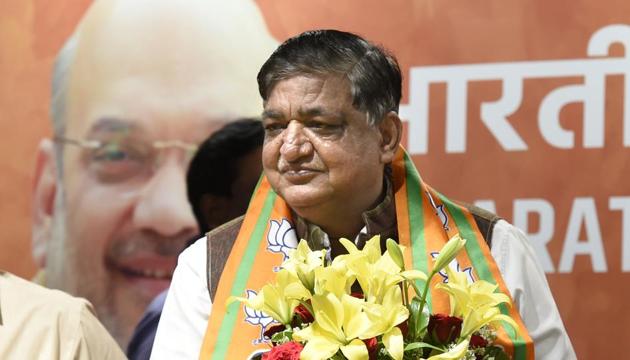The changing colours of political scarves and their meaning | Opinion
Sanjay Seth is a realtor who joined SP in the heat of the Yadav family crisis in Uttar Pradesh. He became the party’s treasurer after Akhilesh Yadav’s uncle Shivpal Yadav threw a banner of revolt. Two-time MP and businessman Nagar also quit in July.
A picture is indeed worth a thousand words.

Recently a picture posted on Facebook evoked much interest in political circles. The picture showed two senior politicians, Sanjay Seth and Surendra Singh Nagar, wearing saffron scarves, symbolising their political switchover from the Samajwadi Party to the Bharatiya Janata Party.
Both had quit the SP, as well as their Rajya Sabha membership, during the historical parliament session in which the much-awaited Article 370 was nullified.
Seth is a realtor who joined SP in the heat of the Yadav family crisis in Uttar Pradesh. He became the party’s treasurer after Akhilesh Yadav’s uncle Shivpal Yadav threw a banner of revolt. Two-time MP and businessman Nagar also quit in July.
Others who could be spotted clearly in the picture were Ashok Bajpai, Naresh Aggarwal and Neeraj Shekhar. Interestingly, all of them were in SP at some point of time. Neeraj Shekhar, son of late Prime Minister Chandrashekhar, had quit SP on July 15 and is already back in the upper house, albeit as a BJP member. Seth and Nagar may also return to Rajya Sabha in the by-polls caused by their resignations.
The months of July-August were indeed crucial for the NDA government as its bill on Article 370 was put to vote in the Rajya Sabha in early August. May be coincidental, but BJP desperately wanted more members in the Rajya Sabha and thus the resignations too happened during the same crucial period.
Soon after Neeraj’s resignation, came the decision of influential Congress leader Sanjay Singh to quit Rajya Sabha and join the BJP.
Now the question is: Was it just their scarves that went saffron or did they actually adopt BJP’s ideology that they openly condemned before they wore them?
In fact, not many have forgotten the ‘day-long’ chief minister Jagdambika Pal, who a night before joining the BJP, was sharply accusing the party of pursuing communal politics. His political journey had started in the Congress . He got positions and power.
But the 2014 general polls were round the corner and Congress could not guarantee him a ticket or a win. Thus, he desperately needed a ticket that could propel him to the Lok Sabha.
Sometimes, I wonder how the voters accept such overnight changes—from communal to patriots. Scarves are fine, only their colour changes, but what about their speeches—from Sonia-Rahul bhakt to Ram bhakt.
As for Naresh Agarwal, he needs no introduction as he has been in all the political parties – Congress, Samajwadi Party, Bahujan Samaj Party and now the BJP. The former MP has all throughout maintained cordial relations with his ex-leaders, so much so that he had even confided in Mulayam Singh Yadav before joining the BSP in 2007 promising to return to the party after the end of its five-year long tenure. And he had kept his word. Before the 2012 assembly elections in the state he, along with his son, had returned home to quit it again to join the BJP.
The political grapevine says Aggarwal played a key role in breaking away SP MPs and their eyes were incidentally only on those in the Rajya Sabha. There are still 10 more SP members on their radar.
Lok Sabha MPs do not easily quit their seats as contesting elections is a costly affair.
Switching loyalties is nothing new to UP or to the country. It has been going on for time immemorial. Congress started it all when the opposition came together to destabilise it in 1967. It was the Congress that had instigated former Prime Ministers, Charan Singh and Chandrashekhar to break from the coalition to rule the country. It is another matter that both could not last long—the former had to quit before facing the parliament. Undoubtedly, the Congress broke parties ruthlessly in pursuit of power, not only at the Centre but in the states too.
Now BJP is doing the same, paying them back in the same coin. Even leaders, irrespective of their political stature, are willing to hop parties. Take for instance Karnataka and Tamil Nadu. After the death of his son-in-law VG Siddharth, owner of Café Coffee Day, people do wonder why former Karnataka chief minister SM Krishna had actually quit the Congress. BJP needed him for political reasons as it was keen to form a solo government in Karnataka. But was that the only reason?
After all some change parties for personal promotion, some for protection. The question, however, is: For how long this dance of democracy will continue?



